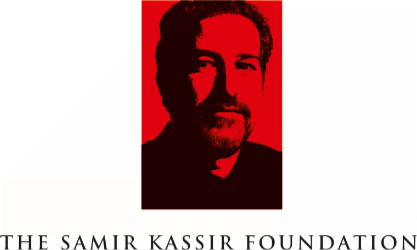Politics
A deeply rooted reputation of liberalism leads to the assumption that the media enjoy more freedom in Lebanon than in any other Arab country.
The key to politics: sectarianism
Lebanon’s political system, classified as democratic and parliamentary, is in fact a hybrid regime. The need to respect “confessional balance” is often an excuse to deviate from general democratic principles and practices. Lebanon’s consociational regime (see Metadata) was endorsed by the unwritten 1943 National Pact, which was set to share political power and executive positions between Christians and Muslims, the top ranks being allocated to a "troïka", the President, a Maronite Christian, the Speaker of the Parliament, a Shiite Muslim, and the Prime Minister, a Sunni Muslim.
This verbal “understanding” was supposed to reduce the tensions between the co-existing minorities and maintain the fragile stability of the country. It developed into a distribution of authority between clans and dynasties, ranging from influential feudal chiefs (zaïm) and ex-warlords to heirs of powerful families. Paradoxically, this pattern of co-existence was and still remains both a remedy and a main reason for conflict. The 1989 Taif Agreement destined to end a fifteen year long civil war (1975-1990), systematized it, perpetuating sectarianism as a key element of Lebanese politics, the media scenery being a mere reflection of this reality.
Using media as a political mouthpiece
Almost all political parties and militias mounted their own media panoply responding to their imperatives of communication. The first two were Sawt Lubnan (Voice of Lebanon), the radio of the Phalange (Kataëb) Party in 1958 and LBC, the TV station founded by the Lebanese Forces in 1985. While many print outlets were legally put up due to the 1962 Press Law, all commercial radio and television stations were created outside any legal framework, eventually breaking up the monopoly attributed to the two state-run outlets Radio Liban and Télé Liban. Not only did each media outlet promote the sectarian views of a local military/political/religious faction, but often served as the mouthpiece for foreign Arab stakeholders who backed up Lebanese protagonists financially. This external support dropped significantly after the toppling of several Arab dictators, most notably Saddam Hussein in Iraq in 2003 and Muammar Gaddafi in Libya in 2011. Funding from Iran, Saudi Arabia, Qatar, and other Gulf countries continued but has also been reduced in the last three years.
Neighboring Syria, being the hegemon of Lebanese politics for over thirty years (1975-2005), manipulated the media among other “tools” (political leaders, public institutions, and security apparatuses…). The Audiovisual Media Law No. 382 of 1994 was adopted by a Parliament where pro-Syrian parties had an overwhelming majority. Lebanon became the first Arab State to authorize private radio and TV stations to operate within its borders. However, a number of them – which were operating before the law was adopted – were unable to obtain licenses due to extremely high fees. They were declared illegal and subsequently closed. Licenses were granted to corporate conglomerates linked to prominent politicians, openly or discreetly loyal to the Syrian regime. Self-censorship became the dominant feature of media performance especially when it came to tackling the Syrian presence. Several attacks on freedom of expression occurred, the most prominent being the closure of Murr TV (MTV) on September 4, 2002.
Polarization of the media scene
After the assassination of former Prime Minister Rafik Hariri (February 14, 2005), the Cedar Revolution (March 2005) and the Syrian withdrawal (April 2005), Lebanon was split into two opposing camps: the pro-Syrian March 8 alliance and the US-Saudi backed March 14 coalition. March 14 was supported by the Annahar newspaper, the francophone daily L'Orient-Le Jour, the Al-Mustaqbal daily and Future TV (organs of the Future Movement), and the NOW Lebanon website (which is no longer operating). March 8 enjoyed the support of the Assafir and Al-Akhbar newspapers and of audiovisual media as Al-Manar run by Hezbollah, Speaker of Parliament Nabih Berri’s NBN, OTV – closely related to the Free Patriotic Movement – and Al-Jadeed (New TV) pleading a leftist obedience though owned by businessman Tahseen Khayat.
In this context, attacks against the media culminated with the assassination of Annahar columnist Samir Kassir on June 2, 2005 and Annahar CEO and MP Gebran Tuéni on December 12, 2005, as well as the assassination attempt targeting then-LBCI news host May Chidiac on September 25 of the same year.
Seen as weapons, front line battlegrounds, and arenas, all media grew increasingly polarized. To attack one is to attack a “symbol” of a religious community and/or political party, consequently provoking a nationwide crisis. On May 7, 2008, tensions between Sunni and Shiite escalated. Future TV, owned by the Hariri family, was put off the air by Shiite militia who stormed its studio. Since then, recurrent incidents continue to cause media outlets being caught in the crossfire.
Metadata
Consociationalism is a form of democracy which seeks to regulate and stabilize a society comprised of diverse groups. More
Sources


